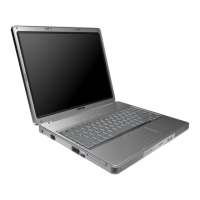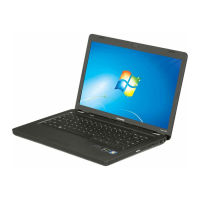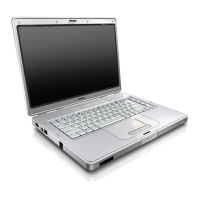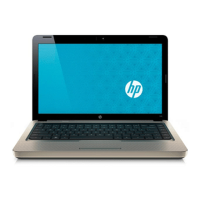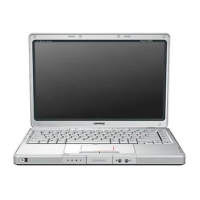
Do you have a question about the HP Compaq Presario,Presario V2000 and is the answer not in the manual?
| Chipset | Intel 915GM |
|---|---|
| Wireless | 802.11b/g |
| Networking | 10/100 Ethernet |
| Operating System | Windows XP Home or Professional |
| Processor | Intel Pentium M or Intel Celeron M |
| RAM | 256 MB to 2 GB |
| Storage | 40 GB to 100 GB HDD |
| Display Resolution | 1280 x 800 pixels |
| Graphics | Intel Graphics Media Accelerator 900 |
| Optical Drive | DVD-ROM |
| Ports | 3 USB 2.0, VGA, S-Video, RJ-11, RJ-45, headphone/microphone jacks |
| Battery Life | Up to 3 hours |
Identifies standard keyboard keys, function keys, and special function keys.
Details the notebook's touchpad, its components, and basic operations.
Locates and describes power buttons, display switch, and indicator lights.
Describes the function of dedicated wireless and volume adjustment buttons.
Identifies the location and function of the notebook's wireless antennae.
Identifies lights, speakers, and audio jacks on the front panel.
Identifies exhaust vents and the AC power connector on the rear panel.
Details ports and features on the left and right side panels.
Locates Mini PCI, memory compartments, battery bay, and hard drive bay on the bottom panel.
Lists and describes external hardware, optical discs, and notebook labels.
Details touchpad operation, component identification, and preference customization.
Explains hotkeys, provides a reference table, and guides on their usage.
Explains how to use the embedded and external numeric keypads.
Guides on selecting power sources, switching between battery/external power, and controls.
Explains standby, hibernation, and shutdown modes, including safe work practices.
Step-by-step instructions for powering on/off, standby, hibernation, and emergency shutdowns.
Covers power schemes, passwords, battery charging, monitoring, and replacement.
Describes internal speakers, volume controls, and audio jacks.
Guides on connecting external audio/video devices and displaying video images.
Covers media hotkeys, playback protection, disc writing, and DVD region settings.
Lists included software, installation procedures, and copyright warnings.
Explains wireless capabilities and how to control 802.11 and Bluetooth devices.
Covers 802.11 standards, WLAN setup, network connection, and security.
Explains Bluetooth capabilities and how to manage device power states and operations.
Overviews security features, recommendations, and password management.
Details QuickLock, administrator, and power-on passwords, including setting and usage.
Covers antivirus, firewall software, security updates, and optional security cables.
Guides on connecting powered, USB, 1394, and communication devices.
Details digital memory card and PC Card usage, including insertion and removal.
Covers adding drives, drive care, hard drive replacement, and memory upgrades.
Explains the importance of updates and procedures for downloading and installing them.
Details how to use System Restore for undoing software changes by using restore points.
Instructions for accessing, navigating, and configuring the Setup utility.
Details the temperature, humidity, and altitude ranges for notebook operation.
Provides information on the notebook's voltage, current, and power ratings.
Lists the input/output signals supported by the notebook's expansion port.



